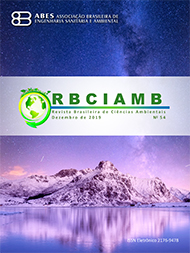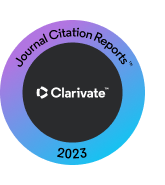PHYSIOLOGICAL RESPONSES OF PEANUT GENOTYPES TO WATER DEFICIT
DOI:
https://doi.org/10.5327/Z2176-947820190580Keywords:
Water, Arachis hypogaea L, Epicuticular wax, Photosynthesis, Multivariate, TranspirationAbstract
Among the environmental factors, water deficit affects several morphological
and physiological processes in plants, which may affect crops’ growth and
development, reflecting on the yield. Thus, the aim of this research was
to evaluate the physiological responses of peanut genotypes submitted to
water deficit. The experimental design was a completely randomized block
with treatments in a 12x2 factorial arrangement, with twelve genotypes
and two hydric conditions, with 5 replications. To evaluate the effect of
stress, at 25 days after emergence (DAE) peanut plants were kept under
water deficiency for four days, while the controls were kept at 70% of
field capacity. At 29 DAE, photosynthesis, transpiration rate, relative
water and epicuticular wax content were evaluated. The photosynthetic
rate was lower for all water deficit genotypes, except for the 870 strain,
which showed higher drought tolerance. Water deficit did not affect the
transpiration rate of Runner IAC 886, IAC OL3, IAC OL4 cultivars and 573,
599, 870 breeding lines. Among the genotypes, there is variation in the
amount of the epicuticular waxes under water-deficit conditions. In relation to anatomo-physiological aspects from the genotypes, it was concluded that lines 573 and 870 are highly tolerant to water deficiency; cultivars IAC OL3, IAC OL4, Runner IAC 886, and 599 and 967 lines are moderately tolerant, and IAC 503, IAC 505 and IAC Tatu-ST, and lines 322 and 506 are more sensitive to water stress during phase of flowering.
Downloads
Downloads
Published
How to Cite
Issue
Section
License
Copyright (c) 2019 Revista Brasileira de Ciências Ambientais

This work is licensed under a Creative Commons Attribution 4.0 International License.

























